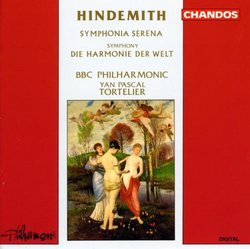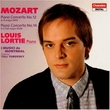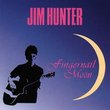| All Artists: Dennis Simons Title: Paul Hindemith: Symphonia Serena (1946) / Symphony "The Harmony of the World" (1951) Members Wishing: 0 Total Copies: 0 Label: Chandos Release Date: 5/12/1994 Genre: Classical Styles: Historical Periods, Modern, 20th, & 21st Century, Symphonies Number of Discs: 1 SwapaCD Credits: 1 UPCs: 095115921722, 009511592172 |
Search - Dennis Simons :: Paul Hindemith: Symphonia Serena (1946) / Symphony "The Harmony of the World" (1951)
 | Dennis Simons Paul Hindemith: Symphonia Serena (1946) / Symphony "The Harmony of the World" (1951) Genre: Classical
Symphonia Serena is the third of Hindemith's six symphonies. Composed in 1946, it's an athletic work, more along the lines of a concerto for orchestra. Hindemith, perhaps more so than any other composer, wrote his symph... more » |
Larger Image |
CD DetailsSynopsis
Amazon.com Symphonia Serena is the third of Hindemith's six symphonies. Composed in 1946, it's an athletic work, more along the lines of a concerto for orchestra. Hindemith, perhaps more so than any other composer, wrote his symphonies with a wide range of instrumental parts. (Some critics disliked the way Hindemith wrote roles for amateur players in a symphony orchestra. But if Symphonia Serena's only fault is its simplicity, then to hell with those guys.) Hindemith's Die Harmonie de Welt is a 1951 work that led to the 1957 opera of the same name. It's less moody than the Symphonia, but good nonetheless. --Paul Cook Similar CDs
|
CD ReviewsDisappointing volume in normally admirable series R. J. Stove | Gardenvale, Victoria Australia | 03/26/2005 (3 out of 5 stars) "Good to see Paul Cook reviewing this CD for Amazon.com; his articles on Hindemith in AMERICAN RECORD GUIDE during the early and mid-1990s made many of us appreciate for the first time what riches lie in Hindemith's hardly-played orchestral oeuvre. Alas, this volume in Chandos's normally admirable Hindemith series disappoints (despite impressive engineering and even more impressive comments in the booklet notes). The reason is soon obvious: string playing that varies from just-OK to downright bad. Not all the famed Chandos reverberation can disguise the fact that the strings here evoke Sir Henry Wood's deathless words: "the ensemble needs to be more together". These are pieces demanding powerhouse technique in every section - the sort of performances which are not only virtuosic but curiously impersonal, like a conveyor-belt process. (Sir Georg Solti was born to conduct this music with the Chicago Symphony, and it is a great shame that he never did.) What they get on the present disc is appropriately brisk and in-your-face wind and percussion contributions, repeatedly needing to contend with violinists and violists who find Hindemith's demands just too much. Some of the solo violin and viola work in the SERENA's third movement can only be described by that expressive monosyllable "ugh". Nothing in THE HARMONY OF THE WORLD's upper string writing punishes the BBC fiddlers quite as severely as SERENA's most exposed passagework, if only because HARMONY OF THE WORLD tends to be a glorified brass concerto anyhow. But nothing sounds really right either. No, stick with the rival version of this same coupling from Herbert Blomstedt and the San Francisco Symphony on the London/Decca label. Better still, buy Chandos' beautiful companion CD containing the SYMPHONIC DANCES (surely one of Hindemith's four or five greatest inspirations?), the PITTSBURGH SYMPHONY (pretty dull at first, yet with a grand-slam finale), and the truly gonzo RAGTIME. That recording's annotations are inferior to this one's - the SYMPHONIC DANCES / PITTSBURGH / RAGTIME note-writer, apparently obsessing over the American market, litters what seems like every second paragraph with references to Charles Ives - but in every other respect it's an excellent release." Excellent Performances D. A Wend | Buffalo Grove, IL USA | 08/04/2005 (5 out of 5 stars) "The music of Paul Hindemith is viewed by many as being "difficult" music. Perhaps this notion comes from Hindemith's evolving compositional style which went from Expressionism to Neo-classicism. He often added jazz and dance elements to his music but never compromised his stance that music had to be tonal. At one time Hindemith's symphony Mathis der Mahler was frequently played but since his death in 1963 his music has been unfairly eclipsed.
The Symphonia Serna was written in 1946 on a commission from the Dallas Symphony. It was written like a concerto for orchestra with a great diversity of instruments and textures. The symphony opens with a beautiful soaring melody that the orchestra develops and contrasts and concludes, gloriously, with the full orchestra a magnificent blaze of brass. The second movement is a series of variations on a march of Beethoven scored for winds and percussion. The third movement is broken into sections with a solo instrument marking the end of the section. It begins with a reflective theme played by the strings and concluded by a solo violin holding a conversation with an off-stage violin. The strings then play a pizzicato section and conclude with a solo viola. This movement demonstrates Hindemith's fertile imagination juxtaposing instruments in refreshing ways. The Finale begins with a flourish of brass and follows with cheerful themes played by the clarinet and then spread through the orchestra. This is Hindemith at his most appealing. . As I listened to this symphony it struck me how much joy there is the composition and how changing a note would have spoiled the music. The Symphony Die Harmonie Der Welt was written in 1951 and later the subject was turned into an opera of the same name in 1957. The story is based on Johannes Kepler, the astronomer and philosopher of the 17th century. Hindemith chose this subject, like Mathis der Mahler, because Kepler was identified with the coming to term of art in society. The direct focus of the opera is Kepler's notion of the harmony of the spheres that led to his excommunication from the Lutheran Church. The symphony is divided into 3 movements with each movement title referring to a musical division found in the writings of ancient authors. I approach the symphony as music alone without any kind of program. Die Harmonie Der Welt is Hindemith at his compositional best with contrasting melodies and imaginative orchestration. The symphonies are nicely performed by Yan Pascal Tortielier and the BBC Philharmonic. The recording is superbly engineered by Chandos. " |

 Track Listings (7) - Disc #1
Track Listings (7) - Disc #1


